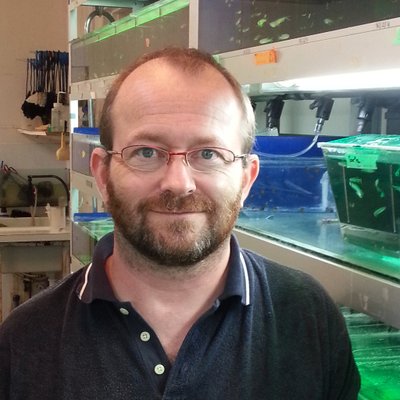Person
Blader, Patrick
|

|
Biography and Research Interest
The vertebrate central nervous system (CNS) is capable of highly complex functions, which are achieved in part thanks to the wide variety of neurons from which it is constructed. Thus, the development of the CNS requires that the appropriate neurons be born at the correct time and place and in the correct numbers. We are aiming to understand how these processes are controlled during development. Our work concerns three axes of research, one primarily historic and two more recent, all of which deal with various aspects of neurogenesis using the zebrafish as a model.
1) Previously, we have studied regulatory element required for the expression of the zebrafish proneural gene neurogenin1 (neurog1). We are now addressing how this bHLH transcription factor regulates its targets.More recently, we have shown that, neurog1 and a second zebrafish Atonal genes neurod4, are redundantly required for development of neurons in the olfactory epithelium.
2) The habenulae are bilateral nuclei in the epithalamus that display left-right (L/R) asymmetries of molecular markers and neural projections. Studies have shown that handedness of this asymmetry is biased by unilateral Nodal signalling. We have shown a L/R asymmetry in the pool of neurog1+ habenular progenitors and that this asymmetry is compromised in the absence of Nodal signalling. We are presently addressing the question of how Nodal signalling induces a left sided bias in habenular neurogenesis.
3) The zebrafish epiphysis is a small, light-sensitive vesicle in the epithalamus containing only two neural subtype, projection neurons or photoreceptors, and as such provides a simple system for understanding how different neural subtypes are specified. We have identified the Notch pathway as an actor in making the choice between these two cell fates. Our results suggest that at least two distinct signals are required for epiphysial neural fate specification: one as yet unknown signal for the induction of the photoreceptor fate and the other, involving Notch, for the inhibition of projection neuron traits. Via a small candidate screen, we recently identified BMP signalling as both necessary and sufficient to promote the photoreceptor fate. We have also demonstrate that crosstalk between BMP and Notch signalling is required for the inhibition of a projection neuron fate in future photoreceptors.
1) Previously, we have studied regulatory element required for the expression of the zebrafish proneural gene neurogenin1 (neurog1). We are now addressing how this bHLH transcription factor regulates its targets.More recently, we have shown that, neurog1 and a second zebrafish Atonal genes neurod4, are redundantly required for development of neurons in the olfactory epithelium.
2) The habenulae are bilateral nuclei in the epithalamus that display left-right (L/R) asymmetries of molecular markers and neural projections. Studies have shown that handedness of this asymmetry is biased by unilateral Nodal signalling. We have shown a L/R asymmetry in the pool of neurog1+ habenular progenitors and that this asymmetry is compromised in the absence of Nodal signalling. We are presently addressing the question of how Nodal signalling induces a left sided bias in habenular neurogenesis.
3) The zebrafish epiphysis is a small, light-sensitive vesicle in the epithalamus containing only two neural subtype, projection neurons or photoreceptors, and as such provides a simple system for understanding how different neural subtypes are specified. We have identified the Notch pathway as an actor in making the choice between these two cell fates. Our results suggest that at least two distinct signals are required for epiphysial neural fate specification: one as yet unknown signal for the induction of the photoreceptor fate and the other, involving Notch, for the inhibition of projection neuron traits. Via a small candidate screen, we recently identified BMP signalling as both necessary and sufficient to promote the photoreceptor fate. We have also demonstrate that crosstalk between BMP and Notch signalling is required for the inhibition of a projection neuron fate in future photoreceptors.
Non-Zebrafish Publications
